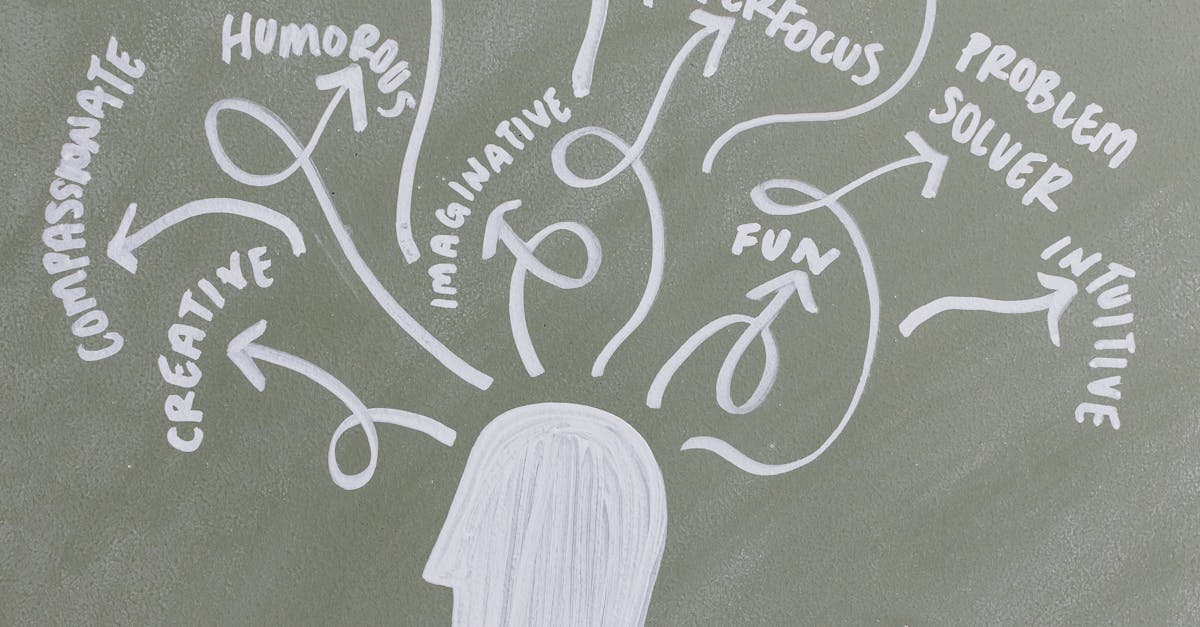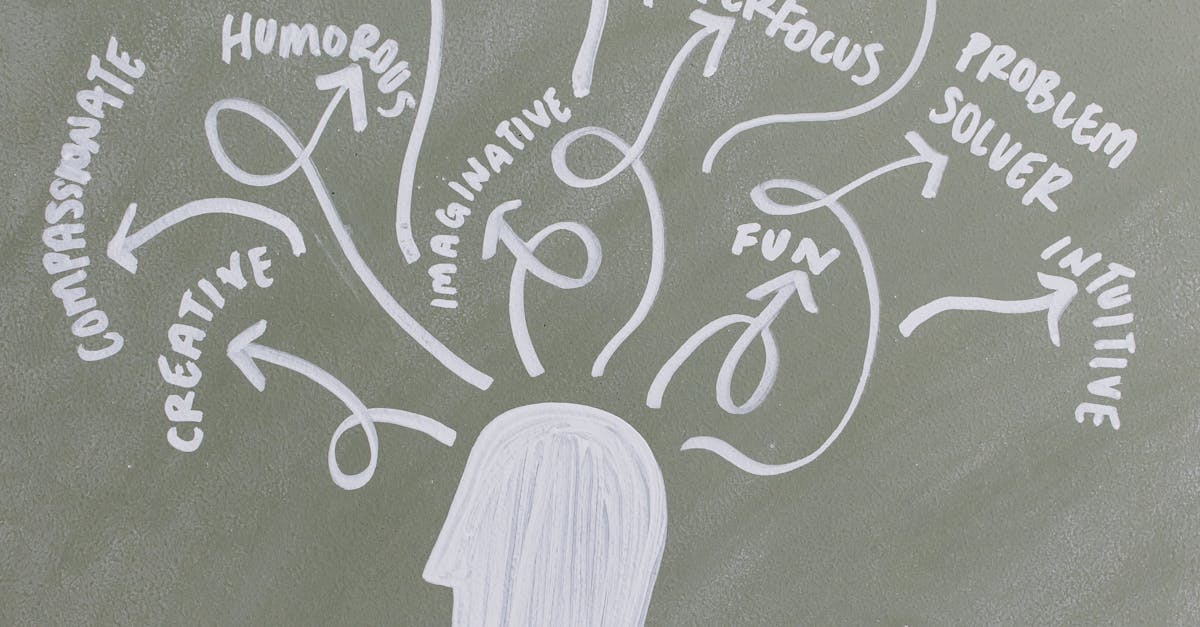Understanding and Supporting Social Emotional Mental Health (SEMH) Needs in Education
Introduction to Social Emotional Mental Health (SEMH)
Definition and Scope of SEMH
Social Emotional Mental Health (SEMH) refers to a broad spectrum of needs that affect a child's ability to manage their emotions, build relationships, and engage effectively in learning. It encompasses a range of difficulties, from anxiety and depression to behavioural challenges and social skills deficits. SEMH needs are recognised as a type of special educational need, reflecting the significant impact they can have on a child's educational experience and overall wellbeing.
Importance of Addressing SEMH in Education
Addressing SEMH needs in educational settings is crucial for several reasons. Firstly, it directly impacts a student's ability to learn and achieve academically. Students struggling with SEMH difficulties may find it challenging to concentrate, participate in class, or complete assignments. Secondly, SEMH support is vital for developing resilience and coping skills that will serve students throughout their lives. Finally, by creating an environment that supports emotional wellbeing, schools can foster a positive, inclusive atmosphere that benefits all students, not just those with identified SEMH needs.
Understanding SEMH Needs
Common Characteristics of SEMH Difficulties
SEMH needs can manifest in various ways, and it's important to recognise that each child's experience is unique. However, some common characteristics include:
- Difficulty in regulating emotions, leading to outbursts or withdrawal
- Challenges in forming and maintaining relationships with peers and adults
- Persistent low mood or anxiety
- Disruptive or challenging behaviour
- Poor self-esteem and lack of confidence
- Difficulty in focusing and participating in learning activities
These characteristics can vary in intensity and may change over time, highlighting the need for ongoing assessment and support.
Factors Contributing to SEMH Challenges
SEMH needs can arise from a complex interplay of factors, including:
- Biological factors, such as genetic predisposition or neurological differences
- Environmental factors, including family dynamics, socioeconomic status, and community influences
- Traumatic experiences or significant life changes
- Learning difficulties or disabilities that may impact self-esteem and social interactions
- Peer relationships and social pressures
- Academic stress and performance expectations
Understanding these contributing factors is essential for developing comprehensive support strategies that address the root causes of SEMH difficulties.
Identifying SEMH Needs in Educational Settings
Observable Behaviours and Indicators
Educators play a crucial role in identifying potential SEMH needs. Some observable behaviours and indicators include:
- Sudden changes in behaviour or academic performance
- Frequent emotional outbursts or mood swings
- Social isolation or difficulty interacting with peers
- Excessive worry or fear about everyday situations
- Physical complaints without apparent medical cause
- Difficulty concentrating or following instructions
- Aggressive or defiant behaviour
It's important to note that these behaviours should be observed over time and in various contexts to accurately identify potential SEMH needs.
Assessment Tools and Techniques
A range of assessment tools and techniques can be used to identify and understand SEMH needs more comprehensively:
- Standardised questionnaires and rating scales, such as the Strengths and Difficulties Questionnaire (SDQ)
- Observational assessments in various school settings
- Interviews with the student, parents, and teachers
- Functional behavioural assessments to understand the purpose of specific behaviours
- Collaborative assessment approaches involving multi-disciplinary teams
These assessments should be conducted sensitively and ethically, with a focus on understanding the child's needs rather than labelling them.
The Impact of SEMH on Learning and Development
Academic Performance and Engagement
SEMH needs can significantly impact a student's academic performance and engagement in several ways:
- Difficulty concentrating and processing information
- Reduced motivation and interest in learning activities
- Inconsistent attendance due to anxiety or other emotional challenges
- Trouble completing assignments or participating in group work
- Underachievement despite having the cognitive ability to succeed
Addressing SEMH needs is crucial for unlocking a student's full academic potential and fostering a positive attitude towards learning.
Social Relationships and Interactions
SEMH difficulties can also have a profound impact on a student's social development and relationships:
- Challenges in forming and maintaining friendships
- Difficulty understanding and responding to social cues
- Increased likelihood of experiencing bullying or social isolation
- Struggles with teamwork and collaborative learning activities
- Impacts on relationships with teachers and other authority figures
Supporting social and emotional development is essential for creating a positive school experience and preparing students for future social and professional interactions.
Implementing a Graduated Approach to SEMH Support
Universal Support for All Students
A graduated approach to SEMH support begins with universal strategies that benefit all students:
- Creating a positive and inclusive school culture
- Implementing whole-school approaches to emotional literacy and wellbeing
- Providing regular opportunities for students to express their feelings and concerns
- Incorporating social and emotional learning into the curriculum
- Establishing clear and consistent behaviour expectations and support systems
These universal approaches create a foundation of emotional support and help to prevent the escalation of SEMH difficulties.
Targeted Interventions for Some Students
For students who require additional support, targeted interventions may include:
- Small group interventions focused on specific social or emotional skills
- Peer mentoring or buddy systems
- Individualised behaviour support plans
- Regular check-ins with a designated staff member
- Targeted social skills training or anger management programmes
These interventions are designed to address specific SEMH needs and provide more intensive support within the school setting.
Specialist Support for a Few Students
For students with more complex or severe SEMH needs, specialist support may be necessary:
- Referrals to external mental health professionals or services
- Individualised education plans (IEPs) with specific SEMH targets
- One-to-one support from trained professionals
- Therapeutic interventions, such as cognitive behavioural therapy or play therapy
- Consideration of alternative educational provisions or settings
Specialist support should be tailored to the individual needs of the student and may involve collaboration with external agencies and professionals.
Effective Strategies for Supporting SEMH Needs
Creating an Emotionally Supportive Environment
An emotionally supportive environment is crucial for addressing SEMH needs effectively:
- Establishing a calm and predictable classroom atmosphere
- Providing safe spaces for students to regulate their emotions
- Fostering positive relationships between staff and students
- Celebrating diversity and promoting inclusivity
- Implementing trauma-informed practices throughout the school
By creating a supportive environment, schools can help students feel safe, valued, and better equipped to manage their emotional challenges.
Developing Social and Emotional Skills
Explicit teaching of social and emotional skills is essential for supporting SEMH needs:
- Implementing structured social-emotional learning (SEL) programmes
- Teaching emotional vocabulary and self-awareness
- Practising mindfulness and relaxation techniques
- Developing problem-solving and conflict resolution skills
- Encouraging empathy and perspective-taking
These skills provide students with tools to better understand and manage their emotions, improving their resilience and social interactions.
Implementing Behaviour Management Techniques
Effective behaviour management is crucial for supporting students with SEMH needs:
- Using positive reinforcement and praise to encourage desired behaviours
- Implementing clear and consistent consequences for challenging behaviours
- Utilising restorative approaches to conflict resolution
- Teaching self-regulation strategies and coping mechanisms
- Providing opportunities for students to make positive choices and take responsibility
These techniques help create a structured and supportive environment while empowering students to manage their own behaviour more effectively.
Collaborative Approaches to SEMH Support
Involving Parents and Carers
Collaboration with parents and carers is essential for effective SEMH support:
- Regular communication about the child's progress and challenges
- Involving parents in setting goals and developing support strategies
- Providing resources and guidance for supporting SEMH needs at home
- Offering parent workshops or support groups
- Ensuring cultural sensitivity and respect for diverse family backgrounds
By working closely with families, schools can ensure consistency of support and leverage the unique insights that parents and carers can provide.
Multi-Agency Collaboration
Effective SEMH support often requires collaboration with various professionals and agencies:
- Establishing strong partnerships with local mental health services
- Coordinating with social services and other community organisations
- Involving educational psychologists in assessment and intervention planning
- Collaborating with speech and language therapists or occupational therapists when needed
- Ensuring clear communication and information sharing between all involved parties
Multi-agency collaboration ensures a holistic approach to supporting SEMH needs, addressing all aspects of a child's life and development.
SEMH Support in Different Educational Settings
Early Years and Primary Education
Supporting SEMH needs in early years and primary settings involves:
- Creating nurturing environments that promote emotional security
- Implementing play-based approaches to social-emotional learning
- Developing strong relationships with families to ensure consistency of support
- Using visual aids and simple language to teach emotional literacy
- Providing opportunities for sensory regulation and physical activity
Early intervention is crucial, as addressing SEMH needs at this stage can prevent more significant difficulties in later years.
Secondary Education
In secondary settings, SEMH support may include:
- Offering targeted support for transition periods, such as moving to secondary school
- Providing opportunities for student voice and leadership
- Implementing peer support programmes and mentoring schemes
- Addressing academic pressures and exam stress
- Integrating SEMH support with careers guidance and preparation for adulthood
Secondary schools need to balance academic expectations with comprehensive SEMH support to ensure students are well-prepared for their future.
Special Educational Needs Settings
In special educational needs settings, SEMH support may involve:
- Providing highly individualised support plans tailored to specific needs
- Implementing specialist interventions and therapies
- Creating low-arousal environments to support sensory needs
- Focusing on life skills and functional independence alongside academic learning
- Ensuring seamless collaboration between education, health, and care professionals
Special educational needs settings often have additional expertise and resources to provide intensive SEMH support for students with complex needs.
Addressing Specific SEMH Challenges
Anxiety and Depression
Supporting students with anxiety and depression involves:
- Creating a safe and predictable environment to reduce anxiety triggers
- Teaching relaxation techniques and coping strategies
- Providing opportunities for gradual exposure to anxiety-provoking situations
- Encouraging positive self-talk and challenging negative thought patterns
- Offering flexible learning options to accommodate periods of low mood or high anxiety
It's crucial to work closely with mental health professionals and families when supporting students with anxiety and depression.
Attention Deficit Hyperactivity Disorder (ADHD)
Strategies for supporting students with ADHD include:
- Implementing clear routines and visual schedules
- Providing frequent movement breaks and opportunities for physical activity
- Using multi-sensory teaching approaches to maintain engagement
- Breaking tasks into smaller, manageable chunks
- Offering praise and positive reinforcement for on-task behaviour
Collaboration with healthcare professionals is essential to ensure a comprehensive approach to supporting students with ADHD.
Attachment Difficulties
Supporting students with attachment difficulties involves:
- Providing a consistent and nurturing key adult
- Creating opportunities for positive relationship-building
- Using emotion coaching techniques to support emotional regulation
- Implementing clear and predictable boundaries and routines
- Being aware of potential triggers and providing appropriate support during transitions
Understanding attachment theory and its implications for behaviour and learning is crucial for effectively supporting these students.
Trauma-Informed Approaches
Implementing trauma-informed approaches in schools includes:
- Creating a safe and predictable environment
- Training staff in recognising and responding to trauma responses
- Avoiding punitive approaches that may re-traumatise students
- Providing opportunities for students to build a sense of control and empowerment
- Collaborating with mental health professionals
- Online platforms offering cognitive behavioural therapy (CBT) exercises
- Educational games that teach social-emotional skills
- Virtual reality applications for exposure therapy and anxiety management
When using digital resources, it's important to ensure they are age-appropriate, evidence-based, and used as part of a broader SEMH support strategy.
Physical Tools and Intervention Materials
Hands-on resources can be valuable for SEMH support in school settings:
- Sensory tools such as fidget toys, weighted blankets, or noise-cancelling headphones
- Emotion cards or charts to help students identify and express feelings
- Art supplies for creative expression and emotional release
- Social stories and visual schedules to support understanding and routine
- Calm-down kits with various self-regulation tools
These physical tools can be particularly helpful for students who benefit from hands-on, tangible supports in managing their emotions and behaviour.
Measuring the Effectiveness of SEMH Interventions
Tracking Progress and Outcomes
To ensure SEMH interventions are effective, schools should implement systematic tracking methods:
- Regular use of standardised assessment tools to measure changes in SEMH needs
- Tracking academic progress alongside SEMH interventions
- Monitoring attendance and behaviour incidents to identify improvements
- Gathering feedback from students, parents, and staff on the impact of interventions
- Using observational data to assess changes in social interactions and classroom engagement
Consistent tracking allows schools to identify what's working well and where adjustments may be needed in their SEMH support strategies.
Using Data to Refine Support Strategies
Effective use of data can help schools continuously improve their SEMH support:
- Analysing trends in SEMH needs across the school to inform whole-school approaches
- Identifying which interventions are most effective for different types of SEMH needs
- Using data to make evidence-based decisions about resource allocation
- Sharing anonymised data with staff to increase awareness and engagement in SEMH support
- Collaborating with researchers or external agencies to evaluate and improve interventions
By using data effectively, schools can ensure their SEMH support strategies are responsive, targeted, and continuously improving to meet the needs of their students.
Conclusion: Fostering Emotionally Healthy School Communities
Addressing SEMH needs in educational settings is a complex but crucial task that requires a whole-school approach, involving educators, students, families, and external professionals. By implementing comprehensive strategies for identifying and supporting SEMH needs, schools can create environments where all students can thrive emotionally and academically.
Key to success is the recognition that SEMH support is not just about managing challenging behaviours, but about fostering resilience, emotional intelligence, and positive mental health for all members of the school community. Through ongoing training, collaboration, and the use of evidence-based interventions, schools can play a vital role in nurturing the social, emotional, and mental health of the next generation.
As we continue to develop our understanding of SEMH needs and effective support strategies, it's essential that schools remain flexible, responsive, and committed to creating inclusive, supportive environments where every student can feel valued, understood, and empowered to reach their full potential.
Frequently Asked Questions
1. What is the difference between SEMH needs and other special educational needs?
SEMH needs specifically relate to a student's social, emotional, and mental health challenges, which can affect their behaviour, learning, and relationships in school. While other special educational needs might focus on cognitive or physical challenges, SEMH needs primarily involve difficulties with emotional regulation, social interactions, and mental wellbeing. However, SEMH needs can often co-occur with other special educational needs, requiring a holistic approach to support.
2. How can teachers identify SEMH needs in their classrooms?
Teachers can identify SEMH needs by observing changes in behaviour, social interactions, and academic performance. Signs may include sudden mood swings, difficulty concentrating, social withdrawal, or disruptive behaviour. Regular use of assessment tools, open communication with students and parents, and collaboration with school mental health professionals can also aid in identification.
3. What are some effective strategies for supporting students with anxiety in school settings?
Effective strategies include creating a predictable classroom environment, teaching relaxation techniques, providing a safe space for students to calm down, breaking tasks into manageable chunks, offering choices to increase a sense of control, and collaborating with parents and mental health professionals for consistent support.
4. How can schools create a more inclusive environment for students with SEMH needs?
Schools can create inclusive environments by implementing whole-school SEMH policies, providing staff training on SEMH awareness, promoting open discussions about mental health, adapting teaching methods to accommodate diverse needs, and fostering a culture of empathy and support among all members of the school community.
5. What role do parents play in supporting their child's SEMH needs?
Parents play a crucial role by maintaining open communication with the school, reinforcing SEMH strategies at home, participating in school-based SEMH initiatives, providing valuable insights into their child's needs and behaviours, and collaborating with school staff to ensure consistent support across home and school environments.
6. How can technology be used to support SEMH interventions in education?
Technology can support SEMH interventions through apps for mindfulness and emotional regulation, online platforms for cognitive behavioural therapy exercises, digital tools for mood tracking, and educational games that teach social-emotional skills. Virtual reality applications can also be used for exposure therapy and anxiety management in controlled settings.
7. What are the long-term impacts of unaddressed SEMH needs on a student's future?
Unaddressed SEMH needs can lead to poor academic performance, increased risk of school dropout, difficulties in forming and maintaining relationships, reduced employment prospects, and ongoing mental health challenges in adulthood. Early intervention and support are crucial for preventing these long-term negative impacts.
8. How can schools balance academic expectations with supporting SEMH needs?
Schools can balance these by integrating SEMH support into the curriculum, adopting flexible teaching approaches that accommodate diverse needs, providing additional support during high-stress periods like exams, and recognising that supporting SEMH needs often leads to improved academic outcomes in the long term.
9. What are some common misconceptions about SEMH needs in educational settings?
Common misconceptions include viewing SEMH challenges as simply "bad behaviour", believing that SEMH needs are not the school's responsibility, assuming SEMH support is only necessary for students with diagnosed conditions, and thinking that academic achievement should always take priority over emotional wellbeing.
10. How can schools effectively collaborate with mental health professionals to support students?
Schools can collaborate by establishing clear referral pathways, inviting mental health professionals to provide in-school services, participating in joint training sessions, sharing relevant information (with appropriate consent), and working together to develop and implement individualised support plans for students with complex SEMH needs.
- Home
- Top Reads
- Why Supportive Environments are Crucial for Mental Well-being
- Roundup of Stress Management Techniques
- 10 Self-care Practices for Mental Well-being
- Review of Resilience and Coping Strategies
- What are Stress Management Techniques
- Why Encouraging Help-Seeking Behaviour is Important
- What are the keys to Creating a Supportive Environment
- What are Stress Management Techniques
- How to Build Resilience and Coping Strategies
- How to practice Self-care effectively
- Roundup of Strategies for Creating a Supportive Environment
- Reviewing the Effectiveness of Help-Seeking Behaviour in Mental Health
- 10 Ways to Create a Supportive Environment for Mental Well-being
- The History of Supportive Environments in Mental Health
- Why Supportive Environments Contribute to Mental Well-being
- Why Building Resilience is Important for Mental Well-being
- What Stress Management Techniques Improve Mental Well-being
- What Self-care Practices are Beneficial for Mental Well-being
- How to Create a Supportive Environment
- Review of Coping Strategies for Stress Management
- How to Encourage Help-Seeking Behaviour
- 10 Self-care Practices for Promoting Mental Well-being
- The Historical Evolution of Stress Management Techniques
- Why Building Resilience is Crucial for Mental Well-being
- What Are Effective Stress Management Techniques
- Why Encouraging Help-seeking Behaviour is Important
- What are the best stress management techniques
- What to Consider When Creating a Supportive Environment
- How to Develop Resilience and Coping Strategies
- How to Practice Self-care for Better Mental Health
- Roundup of Stress Management Techniques
- Review of Resilience-building Techniques
- 10 Self-care Practices for Promoting Mental Well-being
- Why Promoting Mental Well-being Matters
- What Are the Best Ways to Create a Supportive Environment?
- The History of Mental Health Promotion
- Why Encouraging Help-Seeking Behaviour is Important
- What Self-care Practices are Beneficial?
- How to Manage Stress Effectively
- How to Build Resilience and Coping Strategies
- Review of Resilience-building Techniques
- 10 Self-care Practices to Improve Mental Well-being
- The History of Self-care Practices
- Why Encouraging Help-seeking Behaviour Matters
- What Are Effective Stress Management Techniques
- What are the Best Stress Management Techniques
- Why Creating a Supportive Environment Is Important
- What Self-care Practices Are Beneficial
- How to Build Resilience and Coping Strategies
- Review: The Impact of Exercise on Mental Health
- Roundup: Best Practices for Maintaining Mental and Physical Health
- How to Practice Self-care Effectively
- 10 Ways to Support Someone with Mental Health Issues
- Why Mental Health Stigma Needs to Be Addressed
- The Historical Evolution of Mental Health Support
- Why Mental Health Awareness Is Important
- What to Do When You Suspect Someone Is Struggling with Mental Health Issues
- What Are the Symptoms of Common Mental Health Disorders
- How to Manage Stress and Anxiety
- Roundup of Mental Health Resources
- How to Improve Your Mental Health
- Review of Mental Health Support Apps
- Top 10 Myths About Mental Health
- The Historical Understanding of Mental Health
- Why Mental Health Differs Across Age Groups
- What Are the Most Common Mental Health Disorders
- What Are the Risk Factors for Mental Health Issues
- Why Stigma Impacts Mental Health
- How to Support Someone with Mental Health Issues
- How to Recognize Signs of Mental Health Disorders
- Roundup: Strategies for Reducing Stigma in Mental Health
- Review: Impact of Stigma on Mental Health Interventions
- 5 Myths About Stigma and Mental Health Debunked
- Why Addressing Stigma is Important for Mental Health Advocacy
- The Historical Evolution of Stigma in Mental Health
- Why Stigma Impacts Mental Health Treatment
- What Are the Signs of Stigmatization in Mental Health
- What Are the Common Misconceptions About Mental Health Disorders
- How to Support Someone Dealing with Stigma in Mental Health
- How to Overcome Stigma Related to Mental Health
- A Roundup of Risk Factors for Mental Health Issues
- What Are the Lesser-Known Risk Factors for Mental Health Issues
- Why Understanding Risk Factors for Mental Health Issues is Important
- A Critical Review of Risk Factors for Mental Health Issues
- 5 Key Risk Factors for Mental Health Issues
- What are the Most Common Risk Factors for Mental Health Issues
- A Historical Overview of Risk Factors for Mental Health Issues
- How to Address Risk Factors for Mental Health Issues
- Why Risk Factors for Mental Health Issues Should Not Be Ignored
- How to Recognize Risk Factors for Mental Health Issues
- Roundup: Connection Between Mental and Physical Health
- Review: Understanding Risk Factors for Mental Health Issues
- 10 Common Mental Health Disorders You Should Know About
- Why Mental Health Varies Across Different Age Groups
- The History of Understanding Common Mental Health Disorders
- Why Addressing Stigma is Important for Mental Health
- What Are the Effects of Stigma on Mental Health
- What Are the Common Mental Health Disorders
- How to Identify Risk Factors for Mental Health Issues
- How to Recognize Common Mental Health Disorders
- Roundup: Best Practices for Mental Health First Aid Training
- Review: Effectiveness of Workplace Mental Health Initiatives
- 10 Ways to Promote Mental Health Awareness in Your Community
- The Evolution of Community Outreach in Mental Health
- Why Mental Health Stigma Needs to End
- Why Mental Health Education is Important
- What to Say to Someone Struggling with Mental Health
- What to Do When Encountering Stigma in Mental Health
- How to Create a Safe Space for Mental Health Discussions
- How to Support Someone with Mental Health Issues
- Roundup of Best Practices for Workplace Mental Health Initiatives
- Review of Workplace Mental Health Training Programs
- Top Workplace Mental Health Initiatives to Consider
- The History of Workplace Mental Health Initiatives
- Why Mental Health Support is Essential in the Workplace
- Why Workplace Mental Health Initiatives are Important
- What to Include in a Workplace Mental Health Policy
- What Are the Benefits of Workplace Mental Health Initiatives
- How to Implement Mental Health Initiatives in the Workplace
- How to Create a Supportive Workplace Environment for Mental Health
- Roundup of School-Based Mental Health Program Resources
- Review of Best Practices for School-Based Mental Health Programs
- Top 10 Components of Effective School-Based Mental Health Programs
- What Are the Benefits of School-Based Mental Health Programs
- Why Mental Health Programs Should Be Integrated into School Curriculum
- Why School-Based Mental Health Programs Are Essential
- What to Consider When Designing Mental Health Programs for Schools
- What Are the Benefits of School-Based Mental Health Programs?
- How to Create a Safe Space for Student Mental Health
- A Roundup of Mental Health First Aid Training Resources
- How to Implement Mental Health Programs in Schools
- A Review of Mental Health First Aid Training Programs
- Top 10 Tips for Mental Health First Aid Training
- The History of Mental Health First Aid Training
- Why Mental Health First Aid Training Should Be Mandatory
- Why Mental Health First Aid Training is Important
- What is Mental Health First Aid Training
- What are the Benefits of Mental Health First Aid Training
- How to provide Mental Health First Aid Training
- How to Recognize and Respond to Mental Health Emergencies
- A Roundup of Successful Community Outreach and Engagement Initiatives
- A Review of Mental Health First Aid Training Programs
- 10 Ways to Support Stigma Reduction in Your Community
- The History of Stigma Reduction Campaigns
- Why Community Outreach and Engagement is Vital
- Why Workplace Mental Health Initiatives Are Important
- What Are the Key Components of School-Based Mental Health Programs
- What Stigma Reduction Campaigns are Most Effective
- How to Provide Mental Health First Aid in Crisis Situations
- How to Promote Stigma Reduction in the Community





















































































































































